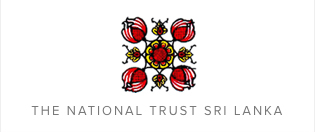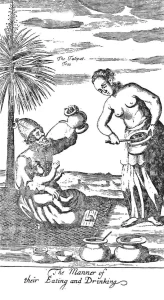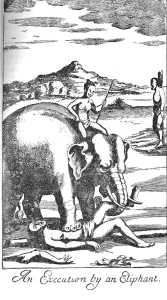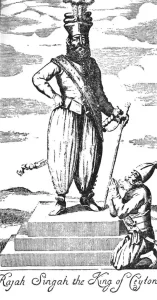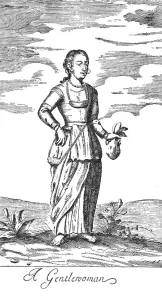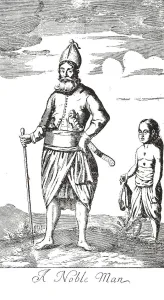Robert Knox’s Journeys in Ceylon and the World in the 17th Century: One
Source: Thuppahi.com
Thiru Arumugam, in The Ceylankan, vol 25/1, February 2022 , where the title reads thus “A three-hundred-and-forty-year-old book about Ceylon – Part 1″
There exists a three hundred-and-forty-year old book about Ceylon which was published in 1681. Although there are other books about Ceylon in other European languages written in the 17th century, this is the oldest book about Ceylon in English. Other books of this genre include the manuscript of Fernao de Queyroz’s book in Portuguese titled “The Temporal and Spiritual Conquest of Ceylon” which was completed in 1687 but the author died a few months later in Goa and the book was never published until Father SG Perera translated it into English and published it in 1930. Another book is by Phillippus Baldeus titled “A true and exact Description of the Great Island of Ceylon” which was published in 1672, but this was in the Dutch language.

An Historical Relation of the Island Ceylon,
As you probably would have guessed by now, the book referred to in the title of this article is the one written by Robert Knox (see Fig. 1), based on his knowledge of Ceylon gathered during his captivity of nearly twenty years by Rajasinha II, the King of Kandy (see Fig. 2). In the 17th century it was the fashion for books to have long subtitles, and the full title of Knox’s book is: “An Historical Relation of the Island Ceylon, in the East-Indies: together with an Account of the Detaining in Captivity the Author and divers other Englishmen now Living there, and of the Author’s Miraculous Escape.”
In the interests of brevity, future references to this book in this article will be to Historical Relation. In Australia, copies of this book printed in 1681 can be seen in the Australian National Library in Canberra and in the State Library of New South Wales in Sydney and in the State Library of Victoria in Melbourne. CSA’s founder, Hugh Karunanayake recounts how CSA Member the late Dr Brendon Gooneratne, when he was a fifteen-year old schoolboy in Royal College, won some prize vouchers. He immediately made his way to H W Cave’s Bookshop in Colombo Fort and purchased a 1681 edition of Historical Relation. In later years Brendon became an avid collector of antiquarian books about Ceylon and his collection included copies of Historical Relation translated into German (1689), Dutch (1692) and French (1693). These were all pirated translations, [since] copyright law initially came into effect in England only when Parliament passed the Copyright Act in 1710.
Early years of Robert Knox
Robert Knox was born in Tower Hill, London on 08 February 1641. His father, who was also called Robert Knox, was a sea-faring ship’s captain. Young Knox was sent to a school in Roehampton, London, run by James Fleetwood who had previously tutored King Charles II when he was young, and later in 1663 became Vice-Chancellor of the University of Cambridge. In 1665 Oliver Cromwell closed down Fleetwood’s school and Knox’s father hoped that his eldest son would follow a business career in the City of London, but the call of the sea was too strong for young Knox and in 1655 at the age of 14 years he joined as a crew member the 230 ton ship Anne captained by his father, sailing to the East Indies. The ship returned to London in 1657 after a successful voyage, calling at Madras and other ports in India. They were, however, distressed to find that meanwhile Abigail Knox, wife Robert Knox Senior, had passed away in 1656 and was buried in Wimbledon. In 1657 Oliver Cromwell issued a charter granting to the East India Company a monopoly of the eastern trade and Robert Knox Senior had to join the East India Company to continue trading in the East Indies.
The next voyage of the Anne was in January 1658 when Captain Knox and his son sailed under the flag of the East India Company to Persia, India, Sumatra and back to the port of Masulipatam, north of Madras in India. Now known as Machilipatnam in the State of Andhra Pradesh, it was the first British settlement in the Bay of Bengal. On 19 November 1659 they were here, loading the ship to return to London, when they were hit by a severe storm and the only way of saving the ship was by cutting the main mast. A message was sent to the East India Company Office in Madras asking for instructions. Captain Knox was told that there were no straight trees in South India of sufficient girth and height to be used as a main mast. He was asked to limp along using the mizzenmast and sail to Kottiyar Bay in Trincomalee, Ceylon, where suitable timber for the mast could be found in the surrounding jungles. Kottiyar Bay is part of Trincomalee Harbour which is the second largest natural harbour in the world. Captain Knox was told that it was a safe place because there was no Dutch presence in Trincomalee at that time.
Taken captive
Anne arrived in Kottiyar in early February 1660 and the ship’s crew spent about two months collecting timber from the jungle to repair the ship. At this point Captain Knox made a major error of protocol. He should have sent a messenger with presents to Rajasinghe II, the King of Kandy, informing him of his presence in Trincomalee and that he was here only to repair his ship, He failed to do so. When the King heard about the presence of an English ship, he immediately became suspicious. He had enough problems earlier with the Portuguese and currently with the Dutch and he was wondering whether this ship was the vanguard of an English invasion. He immediately despatched one of his Generals, a Disawa named Tennekoon, with troops to apprehend the English.
The Disawa reached Trincomalee and sent a message to Captain Knox who was on board the Anne on 04 April 1660 to come ashore to receive a letter from the King. Suspecting a trap, Captain Knox did not come ashore, but sent his son Robert together with John Loveland who was the representative of the East India Company on the ship. When they came ashore they found that the Disawa was actually camped out 12 miles inland. They went and met the Disawa who told them that his instructions were to hand over the letter personally to the Captain. As it was now getting dark, they were given accommodation for the night and the following day a message was sent by the Disawa, with presents, to Captain Knox that if 12 miles was too far inland for him, they could meet at a tamarind tree upriver and nearer to the shore. Captain Knox proceeded in a longboat with rowers to the designated place and they were all promptly arrested. The following day some carpenters from Anne came ashore searching for timber and they too were arrested.
The Disawa then asked Captain Knox to inform his crew to bring Anne close to the shore. Captain Knox said that his crew would now be aware that he had been arrested and therefore they would not follow his orders. Meanwhile, Captain Knox had informed the Chief Mate on board the ship that if he did not return within twenty days, he should sail off back to Madras. A standoff had been reached. After twenty days the ship sailed off and Captain Knox, his son and fourteen other crew members began their forced march to Kandy.
Death of Captain Robert Knox
The long march to Kandy took about a fortnight. When they came near Kandy there was a message from the King that the captives were to be kept singly in different villages. There were two reasons for this decision. Firstly, the King was worried that if all sixteen were kept together they may plan to escape. Secondly, the villagers were commanded by the King to house and feed the captives and feeding sixteen captives would be beyond the resources of a village. Fortunately, Captain Knox and his son were allowed to stay together. They also had with them a young Indian who had been asked to join the ship in India as a Translator because he was fluent in English, Portuguese and Tamil. Knox does not give his name but describes him as the ‘black boy’.
The village to which Knox was assigned was Bandara Koswatte in the Hath Korales. It is about thirty miles north of Kandy and is about five miles north of Dodangaslanda. They reached there on 16 September 1660. The accommodation provided was a hut with a thatched roof but without walls. Captain Knox was provided with a wooden bed with a mat, but his son had to sleep on the floor. The villagers daily provided them with two rice and curry meals each.
As the hut had no walls, mosquitoes were a major problem and it was not long before father and son were stricken with malaria and ague. The nineteen year old son was not so seriously affected but Captain Knox who was in his fifties was bedridden for several weeks with total loss of appetite and was reduced to skin and bones. On 09 February 1661, Captain Knox felt that his time had come and he called his son to his bedside and told him: “In the first place and above all, He charged me to serve God, and with a circumspect care to walk in his ways, and then, God would bless me and prosper me. And next, he bad me have a care for my Brother and Sister. And lastly, He gave me a special charge to beware of strong Drink, and lewd Company, which as by Experience many had found, would change me into another man, so that I should not be myself”.
These were Captain Knox’s last words and he passed away in the early hours of the morning. Robert Knox sent a message to the villagers asking for help with the burial, but they declined to help and only sent a rope with a halter so that he could drag the body to the jungle. Robert Knox and the ‘black boy’ managed to take the body to the edge of the paddy fields where they dug a shallow grave with their own hands and buried the body. Although there is no memorial stone to mark the location of the grave, to this day the local villagers can indicate the exact spot where he was buried. Since then the village was known as Parangi-vatta.
Devastated by his father’s death, Robert Knox states: “Thus was I left Desolate, Sick, and in Captivity, having no earthly Comforter, none but only He who looks down from Heaven to hear the groaning of the Prisoners, and to shew Himself a Father of the Fatherless, and a present help to them that have no helper”.
Robert Knox continues to live in Bandara Koswatte
In order to earn some money to buy necessities like clothes, Knox learned the art of knitting caps. The thread required for a cap cost the equivalent of three English pence whereas the completed knitted cap could be sold for nine pence, providing a steady income. Ananda Coomaraswamy, when he was collecting information for his comprehensive 1908 book ‘Medieval Sinhalese Art’ tried unsuccessfully to find more information about this art of cap knitting. Perhaps it is within the ambit of his prediction that “rural arts and crafts are the only true art discoverable in Ceylon today. In a few years it may be gone forever”.
Eating and drinking
Robert Knox had only two books with him. The first was “The Practise of Pietie” by Lewis Bayly. This was a pocket-book edition printed in 1654 and was described as “a guide for the hours of meditation” and was given to him by his mother when he set out on his first voyage as a 14 year old. The second book was “The Practice of Christianitie” by Richard Rogers. This book printed in 1629 was described as an “Epitome of Seven Treatises, contracted for private Use”. This book had been brought ashore by one of the other crew members of Anne. As these were the only reading material that he had, Robert Knox read them from cover to cover many times.
One day when Knox was fishing in the village stream, a villager who was passing by asked him whether he would be interested in buying from him a book which he said he had obtained from the Portuguese some years ago when they vacated Colombo. Knox sent his ‘black boy’ with the villager to see what the book was about since he was fluent in Portuguese. The boy returned a while later and told Knox excitedly that the book was a Bible in English. Knox could not believe his ears. The only money he had was a gold coin and he was prepared to part with that in exchange for the Bible. The ‘black boy’ however negotiated with the villager and the final price agreed was one of the caps that Knox had knitted. His reaction when he saw the Bible was: “The sight indeed of this Bible so overjoyed me, as if an Angel had spoke to me from Heaven. To see that my most gracious God had prepared such an extraordinary Blessing for me: which I did, and ever shall look upon as miraculous, to bring unto me a Bible in my own Native Language, and that in such a remote part of the World … it being the thing for want whereof I have so often mourned, nay and shed tears too; and than the enjoyment whereof there could be no greater joy in the world to me”.
In the middle of 1662, Knox had a surprise visit from a fellow crew member, John Gregory, who brought news of the other captives. Most of them had adopted native dress, become fluent in Sinhala and some of them had got married. Meanwhile, Knox decided to do his own cooking and asked the villagers to supply provisions to him instead of cooked meals. As he now required a kitchen, he built a mud hut for the purpose. He also started rearing pigs, goats and poultry.
Rebellion
In December 1664, Knox and all the other crew members were asked to come to meet the King who was living in Nilambe. They were very pleased to meet each other, for many of them it was the first time they were meeting since they were arrested. They were told that the King had received a letter from the East India Company in Madras pressing for their release and this was also supported by the Dutch in Colombo. They were told that they would be released very soon. They were then asked, one by one, whether they wished to be released or whether they would agree to be employed by the King and richly rewarded. To a man they said that they wished to be released, an answer which greatly disappointed the King.
They were waiting to be released when on the night of 21 December 1664 a rebellion broke out. The rebels were led by Ambanvela Rala who wanted to replace King Rajasinha by his son Prince Vimala Dharma Surya who was about fifteen years old. The King, however, managed to escape by a back exit and fled to the mountains to a place called Diyatilaka, near Hanguranketa. There was chaos in Nilambe for a few days and this was compounded by the Prince refusing to be enthroned and he also fled from the palace. Meanwhile both parties to the conflict tried to recruit the English captives to join them, but they wisely remained neutral. Within a few days the rebellion petered out and the rebels and their leader Ambanvela Rala were captured. Instead of executing him, the King sent him to the Dutch in Colombo where he expected the Dutch to torture and execute him. The Dutch decided that he was more valuable alive than dead and he became an unofficial adviser to the Dutch on Kandyan kingdom affairs.
Knox moved to Dayaladahamuna Pattuva
When the dust settled after the rebellion, the captives found themselves between the devil and the deep blue sea. They had lost their previous places of residence, they had no accommodation and food and were virtually beggars in the streets of Nilambe. This situation continued for a few weeks until the King assigned new villages for the captives and all talk of their release was dropped. Knox was assigned to the village of Dayaladahamuna Pattuva, which was to the west of Kandy. Knox settled down there and built a mud hut for his residence which he surrounded with a thick hedge and a deep ditch, like an Englishman’s castle. He also planted fruit trees. By now he had completed five years of captivity.
Knox moved to Legundeniya
About two years later in 1666, the Dutch established a garrison in nearby Beligal Korale about six miles south-west of Kegalle. The King was worried that Knox may try to escape to the Dutch garrison and Knox was again moved to a village called Legundeniya. This was a small village situated on a mountain top, often covered with mist, with only about five houses. It had a beautiful view of the Mahaweli Ganga down below. Knox had to share accommodation with John Loveland, who was the East India Company’s representative on the Anne.
Knox had completed about eight years in captivity when he heard that there was a plot of land for sale. As only priests could own land freehold, Knox inquired from the King’s representative for the area whether he would be allowed to buy the land. Having obtained the required permission, the sale of the land which was in Eladetta was concluded and the transaction recorded on ola leaves. The price paid was the equivalent of five dollars, a princely sum of money at that time.
Knox settles in Eladetta
Eladetta was a village about five miles north of Gampola. The plot of land was surrounded by paddy fields on three sides and had plenty of water. It had eight coconut trees and plenty of fruit trees, but no house. Knox set about building a commodious house. He was assisted in this by three other fellow captives, Roger Gould, Ralph Knight and Stephen Rutland. The house included a separate kitchen. In return for helping build the house, the three of them were allowed to live in the house as long as they remained bachelors. When they got married, they would have to move out.
The four of them lived happily. Knox planted more fruit trees on his property. He knitted caps and sold them. He also loaned seed paddy to farmers during the planting season and when the farmer harvested his crop he had to return to Knox fifty percent more paddy than he borrowed. That was the accepted rate of interest.
Knox’s close friend, John Loveland who shared his house in Legundeniya, lived in a neighbouring village. In 1670 John fell sick and Knox allowed him to move into his house in Eladetta as Knox realised that he was terminally ill. John passed away in Knox’s arms on 22 October 1670.
The years passed and the captives were beginning to lose hope of ever getting their freedom. In 1672 Gould and Knight decided to get married and they moved out of the house. Knox and Stephen Rutland continued to live in Eladetta. The started breeding goats. They also started a new business of going round the countryside peddling goods and different kinds of wares. Although this gave them additional income, the main idea was to study the layout of the country to see where the watchpoints were so that they could ultimately plan their escape route.
About the year 1673, Knox began to feel that he needed companionship. Knox lived out his life as a confirmed bachelor. Since he was dead against marriage, as an alternative he adopted a local girl named Lucea who was three years old. He employed a servant, who looked after the girl and also did the cooking (see Fig. 4). He taught Lucea to read and write English and read extracts from the Bible to her. He also wrote a will in which he said that in the event of his death or if he left Ceylon never to return, Lucea would inherit the Eladetta house and all his belongings in Ceylon. Lucea continued to haunt him for the rest of his life. Decades later he heard that Lucea was living in the Eladetta house. In 1698 long after his escape when he had an opportunity to send a letter to his fellow captives in Ceylon he wrote:“I have herewith sent my picture to the Girl I brought up, Lucea, and you know I loved the Child & and since have no cause to hate her”.
Escape
By 1679 Knox had been a captive for 19 years and he decided that it was time to make a serious attempt to escape. During the past few years Knox and Rutland had been wandering around the Kandyan Kingdom as pedlars and had gained a good idea where the various checkpoints were on the paths linking the various towns. They realised that it would have impossible to escape westwards to Colombo because there so many checkpoints. To pass a checkpoint one needed a royal pass. A bid for freedom was considered treason. They decided that their best chance would be to go northwards towards Anuradhapura which was the limit of the Kandyan Kingdom. If they could get past Anuradhapura, they would go north-west to Mannar where there was a Dutch fort and their freedom would be assured.
On 22 September 1679, 38-year-old Knox and Rutland left Eladetta on their planned escape. As pedlars they carried with them items in demand in the northern parts of the Kandyan kingdom such as “Tobacco, Pepper, Garlick, Combs, all sorts of Iron Ware etc” plus provisions, knives and axes and set off on their way. They used talipot leaves as shelter from the rain and as a tent at night (see Fig. 5). The talipot palm has the largest inflorescence in the world, going up to eight metres.
They proceeded north stopping briefly at Knox’s father’s grave in Bandara Koswatte. At the various checkpoints they were able to convince the guards that they were genuine pedlars. Proceeding further north, they felt that their presence so far from their place of residence may be regarded as suspicious. They reached the village of Kaluvila and decided to take the bull by the horns and went to the house of the King’s representative. They gave him some presents and explained to him that they had come to sell some goods and buy dried deer meat for which there was demand in Kandy. He was satisfied with their explanation and arranged for safe passage to Anuradhapura.
They reached Anuradhapura safely and sold their wares and bought provisions for ten days. They made some inquiries and heard that the north road leading towards Jaffna and Mannar had many checkpoints near the border of the Kandyan kingdom. There was no way they could get past these checkpoints without a pass. They decided that the only possible route to Mannar was to go through the jungle following the Malvatu Oya which flows north-west past Anuradhapura and enters the sea a few miles south of Mannar.
They left Anuradhapura on 12 October 1679 and followed the banks of the Malvatu Oya. They found the going difficult because there was no footpath and plenty of thorny scrub. In the night they had to light fires to keep away wild animals like elephants, bears and leopards. After five days of walking, they found that they were in Malabar country and were outside the Kandyan kingdom.
They continued their journey and found a man walking towards them. He said that they were now in Dutch country and that the small Dutch Fort of Arippu was about six miles away and gave them directions. Arippu is ten miles south of Mannar. The Fort was built by the Portuguese and taken over by the Dutch in 1658. The ruins of the Fort can be seen to this day. They reached Arippu on 18 October 1679 and were warmly welcomed by the Dutch. No foreigner in living memory had previously escaped from Kandy. Knox records the event as follows: “I was detained prisoner one this Island one the foUrth day April 1660, and by the great providence of God was set at Liberty one the eighteenth October 1679, by which it doth appear that I was prisoner one Ceilon nineteene years six months and fourteene days, which is fower months and seventeene days longer than I had lived in the world before I was taken prisoner there”.
Freedom
The next day they were escorted to the Dutch Fort in Mannar. They were well received by the Dutch Captain there who said that the Commander of the Fort was away in Jaffna and he would have to await his return. Meanwhile Knox was wined and dined by the Dutch. Knox said that it was a strange experience eating at a table with chinaware and wine after nineteen years of eating seated on the floor off plantain leaves. The Commander arrived ten days later and on the following day Knox accompanied the Commander to Colombo by ship arriving there on 02 November 1679.
Knox and Rutland created a lot of curiosity among the European residents of Colombo as they were unshaven, barefoot and dressed in local clothing. They were tidied up and given a full outfit of clothes and shoes and taken to meet the Dutch Governor of Ceylon, Ryklof van Goens. The Governor cross-examined him in detail about life in the Kandyan Kingdom, the state of health of the ageing King of Kandy and news of other European captives in Kandy, particularly Dutch captives. He finally asked Knox what his intentions were. Knox said that he would like to be sent to Madras where there was an East India Company presence and he could get a passage to England from there.
The Governor considered the matter and finally said that he would send Knox to Batavia, in present day Indonesia. Batavia was the Dutch centre of operations for the East and the Governor’s father was the Governor-General of the Dutch East Indies. The Governor said that his father, who was formerly Dutch Governor of Ceylon, would be very interested to hear first-hand from him about conditions in the Kandyan Kingdom. Knox was not very happy with this arrangement as he was sailing away from, rather than towards England, but he had no say in the matter. Knox set sail from Colombo on 24 November 1679 in the 800 ton Dutch ship Nieuw Middleburg, reaching Batavia on 05 January 1680.
In Batavia, Knox was given a right royal reception by the Governor-General, Ryklof van Goens Snr. Two suits of European clothes were stitched by tailors and he was wined and dined. He was again de-briefed about the Kandyan Kingdom and the Governor-General was keen to send him to the Netherlands for further de-briefing.
Meanwhile two English merchants arrived in Batavia from the nearby port of Bantam where the English East India Company had a base. The Governor-General gave Knox permission to go with them to Bantam. In Bantam the English Agent there told him that there was no point in Knox going back to Batavia because an English ship the Caesar was about to sail to England and he could sail to England on that ship. Knox seized the opportunity and sailed off in this ship and reached England on 06 September 1680 after a seven month voyage.
It was during this long sea voyage that Knox started writing Historical Relation. He says that there were three reasons for writing this manuscript, which he says in his own words: “First to Record God’s great mercies in so plentifully sustaining me in the land of myne enimies in despite of those who boath invied & hated me … & after a detainement of 19 yeares 6 months & 14 dayes his providence so disposed of & directed me to escape thence …
Secondly: that after my death if had died by the way my Relations might know what became of my Father & of how & after what manner the Almighty had dealt with me which I could not but thinke they would be glad to be informed of.
Thirdly to exercise my hand to wright for in all the time of my Captivity, I had neither pen Inke nor paper … “.
Regarding the third point, Knox did write a few letters during the nineteen years of his captivity, but these were inscribed on ola leaves. It is amazing to think that Knox remembered all the incidents and place names of his captivity, even though he had not previously written them down.
Back in England
The Caesar docked in Greenwich on the River Thames on 06 September 1680. Knox had returned to his home country more than 22 years after he had left it. A gentleman by the name of Short boarded the ship and asked the Captain who was this strange man. When he was told that he was Robert Knox he said that he knew his brother and sister and gave their addresses. Knox immediately went to the city of London and tracked down his brother James who was naturally overjoyed to meet him. They then went to his sister’s house, but she was initially quite cold to him thinking that he was an imposter, perhaps a fellow captive in Ceylon. Robert allayed her fears by relating some childhood incidents and showing her a birthmark which she remembered.
A few days later Knox went to the London Office of the East India Company and reported his arrival. He found central London quite devasted by the Great Fire of 1666. He was paid only twenty pounds as an ex-gratia payment for his captivity, the Company pointing out that according to the terms of his contract, mariners were entitled to wages for a voyage only if they successfully completed a voyage. Knox met Sir Josiah Child who was on the Committee of the Company and told him that he had written a manuscript of his travels. Sir Josiah asked to see it and said he would take it home and read it.
A few days later Sir Josiah returned the manuscript and said that it had some interesting material and that the Company would sponsor its publication, but the text required editing. Knox enlisted the editing help of his cousin John Strype, who was a priest and had publishing experience having written some ecclesiastical works.
It was at this time that Knox was introduced by his brother James in a coffee house to Prof Robert Hooke (1635-1703). Hooke was an English polymath who was a scientist and an architect. He helped found the Royal Society and he was its first ‘Curator of Experiments’. In 1678 he enunciated Hooke’s Law which every school student of Physics remembers as stress being proportional to strain. It was the beginning of a lifelong friendship. Hooke read the manuscript of Historical Relation and said that it definitely needed to be published. Hooke questioned Knox for more details about the geography, animal and plant life of Ceylon. Hooke and Strype started editing the book which at this stage was more or less disconnected jottings. A very detailed Contents list running to about eleven pages was prepared and the book laid out in chapters. When completed, about three-quarters of the book was about Ceylon in general and balance about Knox’s life there. Hooke also wrote a Preface for the book and arranged for the printing to be done by the Printer to the Royal Society, Richard Chiswell. Chiswell gives the address of his Press as at the Rose and Crown in St. Pauls Churchyard. It must have been refreshing to have a Pub next door to the Press!
On 23 March 1681, Knox’s brother James fell ill and died suddenly at the age of 32 years. This was a severe blow to Knox, but at least they had the pleasure of each other’s company for six months, after a separation of 22 years. James was only nine years old when Knox left on his voyage to Ceylon. James had been doing the engravings for the fifteen illustrations in the book and a new illustrator had to be found to complete the work.
Richard Chiswell completed printing the book and it was released for sale on 01 September 1681. The first page is reproduced in Fig. 6. It was advertised for five consecutive days from 01 September in the London Gazette. It was priced at ten shillings. Publicity was also by word of mouth in the London coffee houses. Chiswell, the Printer and Publisher of the book, was so impressed by the book that he bound a special copy interleaving over hundred blank pages in the book and asked Knox to write additional material in the blank pages so that he could bring out a second revised edition of the book in due course. The interleaving doubled the size of the book.
Michael Roberts: thuppahi.com
